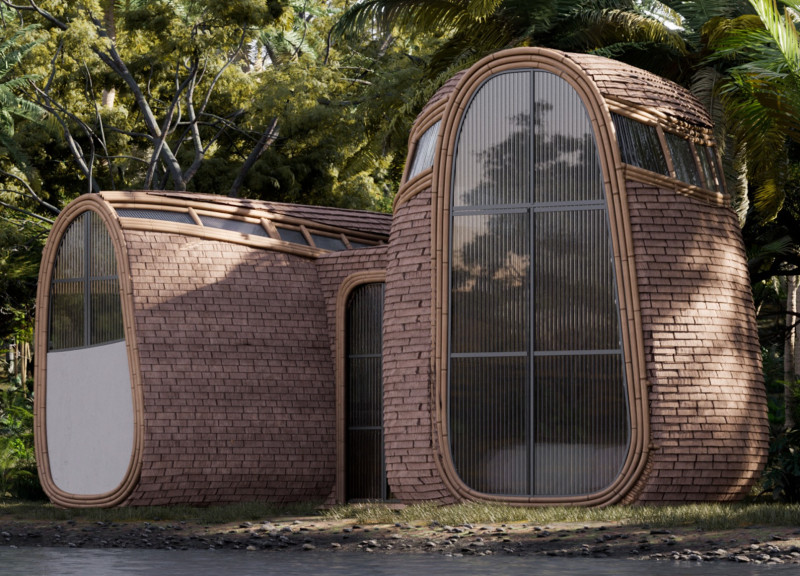5 key facts about this project
The architecture embodies a philosophy that prioritizes user experience and environmental awareness. Each element has been meticulously considered to foster a sense of community while ensuring the building operates effectively as a multi-purpose facility. The project tasked itself with accommodating diverse activities, from social gatherings to educational workshops, thus functioning as an inclusive hub for various demographics.
As one explores the architectural details, it becomes clear that the project is designed with careful attention to both form and function. The facade is a harmonious blend of materials, including concrete, glass, and timber, reflecting a modern aesthetic without compromising the warmth and familiarity that wood offers. The transparent glazing allows natural light to flood the interior, creating inviting spaces that encourage interaction and collaboration. The thoughtful arrangement of materials not only enhances the visual appeal but also contributes to the building's energy efficiency, aligning with sustainable design practices.
The interior layout showcases an open plan that enables flexibility and adaptability. Spaces are delineated by strategic use of partitions and furniture arrangements, fostering a sense of flow while maintaining acoustic privacy where necessary. This adaptability is crucial in a multi-use building, allowing it to cater to varying demands and events. Natural elements, such as indoor greenery, are thoughtfully integrated, promoting well-being and a connection to nature, which is increasingly regarded as vital in contemporary architecture.
Unique design approaches are evident throughout the project, particularly in its environmental strategies. The building employs passive design principles, strategically oriented to maximize daylight while minimizing heat gain and loss. Additionally, features such as green roofs and rainwater harvesting systems underscore the commitment to sustainability, showcasing how architecture can mitigate environmental impact. This dual focus on aesthetics and ecologically responsible choices illustrates the project’s ambition to serve as a model for future initiatives within the community and beyond.
Exploring the architectural plans and sections reveals the meticulous thought that has gone into the design. Each layer of the structure has been analyzed for performance, ensuring that the building not only meets but exceeds local building codes and sustainability benchmarks. The elevation views further clarify the relationship between the building and its surroundings, emphasizing a dialogue with the landscape and urban fabric it inhabits.
This project serves as a testament to the principles of modern architecture, grounded in a blend of practicality, sustainability, and community focus. The design invites further examination of its architectural ideas, offering insights into how spaces can be thoughtfully constructed to foster interaction and support diverse activities. For those interested in a deeper understanding of the project, reviewing the architectural designs and detailed plans can provide valuable context and appreciation for this well-conceived work of architecture.


 Juan Pablo Berrueta Villa
Juan Pablo Berrueta Villa 




















